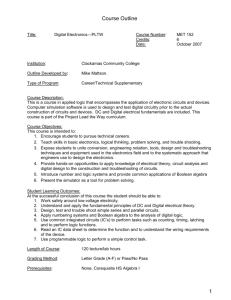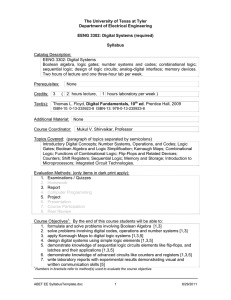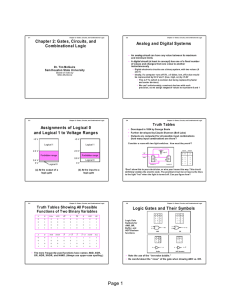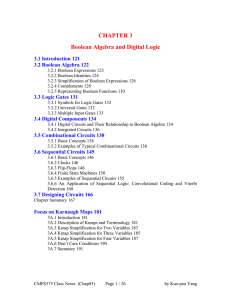Digital Logic Fundamentals - Electrical Engineering Technology
advertisement
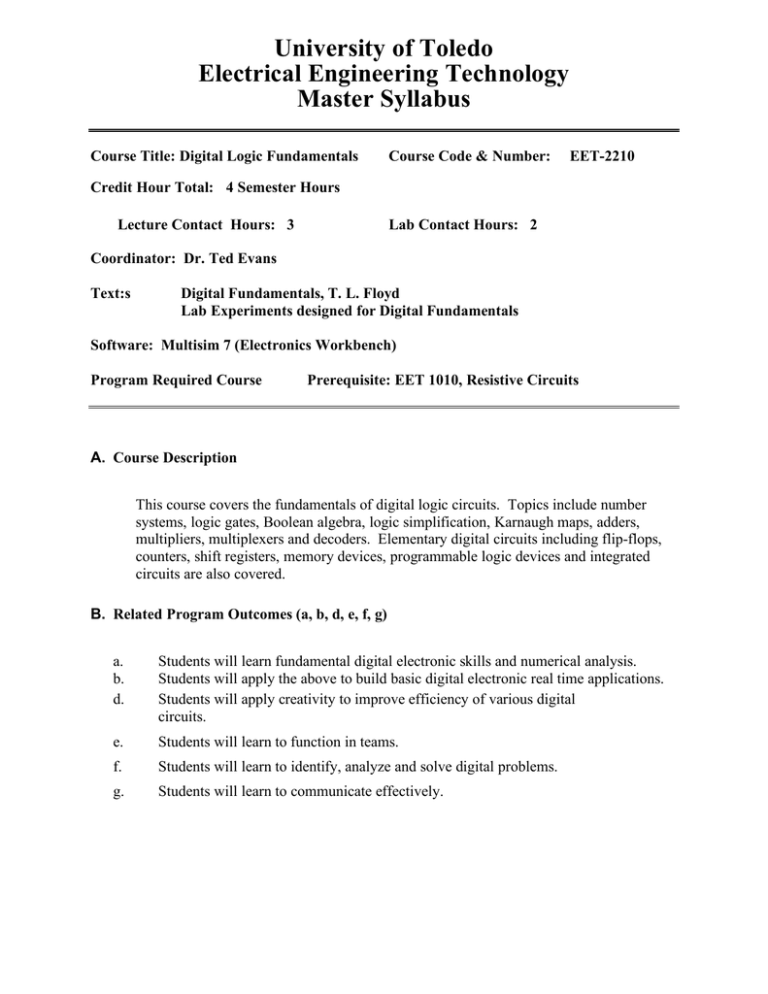
University of Toledo Electrical Engineering Technology Master Syllabus Course Title: Digital Logic Fundamentals Course Code & Number: EET-2210 Credit Hour Total: 4 Semester Hours Lecture Contact Hours: 3 Lab Contact Hours: 2 Coordinator: Dr. Ted Evans Text:s Digital Fundamentals, T. L. Floyd Lab Experiments designed for Digital Fundamentals Software: Multisim 7 (Electronics Workbench) Program Required Course Prerequisite: EET 1010, Resistive Circuits A. Course Description This course covers the fundamentals of digital logic circuits. Topics include number systems, logic gates, Boolean algebra, logic simplification, Karnaugh maps, adders, multipliers, multiplexers and decoders. Elementary digital circuits including flip-flops, counters, shift registers, memory devices, programmable logic devices and integrated circuits are also covered. B. Related Program Outcomes (a, b, d, e, f, g) a. b. d. Students will learn fundamental digital electronic skills and numerical analysis. Students will apply the above to build basic digital electronic real time applications. Students will apply creativity to improve efficiency of various digital circuits. e. Students will learn to function in teams. f. Students will learn to identify, analyze and solve digital problems. g. Students will learn to communicate effectively. C. Course Objectives: • • • • • Develop an understanding of the analytical techniques used in digital logic. Develop an understanding of the laboratory skills used to evaluate digital circuits. Analyze and interpret laboratory data from basic digital logic circuits. Work effectively in the laboratory with lab partners. Identify and solve programs related to digital logic circuits. D. Course Outline – Major Content Areas • • • • • • • • • • • • • Use of different number systems, operations, and codes Introduction to logic gates Familiarization with Boolean Algebra and logic simplification Familiarization with Combinational Logic Familiarization with functions of combinational logic Introduction to VHDL Topics Introduction to flip-flops and related devices Introduction to Counters Introduction to Shift Registers Introduction to memory types and storage Introduction to microprocessors, computers and busses Introduction to digital signal processing (dsp’s) Integrated circuit technologies E. Major Laboratory Topics • • • Construction of a Logic Probe Number systems Logic Gates • • • • • • • Interpreting Manufacturer’s Data Sheets Boolean Laws and DeMorgan’s Theorem Logic Circuit simplification Adder and Magnitude Comparator Combinational logic using multiplexers The D latch and D flip-flop The J-K flip-flop WE 10/18/10
